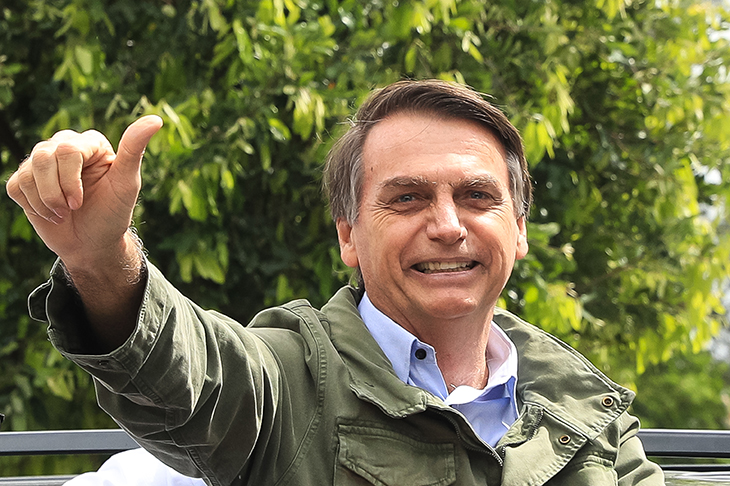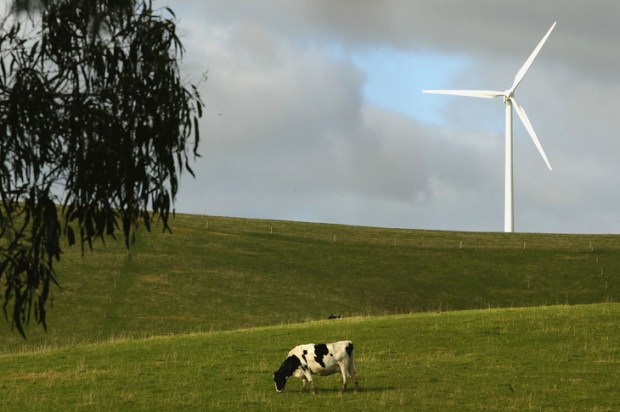With the Paris Agreement on limiting emissions showing major signs of wear and tear, Prime Minister Scott Morrison may feel he has enough electoral credit from his surprise election win to revisit Australia’s obligations under that agreement.
In the latest of a series of blows to the Paris deal, Brazil, which has the sixth-largest greenhouse footprint of the agreement’s 173 signatory countries, has cancelled a climate summit that was due to be held in August in Salvador. That summit was related to the main climate annual meeting which was also due to be held in Brazil this year, until that event was cancelled late last year, with the host country citing budgetary problems.
Despite those actions and previous threats to withdraw from the agreement, Brazilian president Jair Bolsonaro has declared that his country will remain in Paris ‘for now’, but has added conditions that make it clear he wants to be rid of the deal. To emphasise the point, the country’s environment minister Ricardo Salles has called climate change a ‘secondary issue’, declaring that the country wants to focus on everyday problems like sanitation.
Having been pushed out of Brazil the main annual summit of the various parties involved in Paris will now take place in Santiago, the capital of Chile, in December, although that means the proceedings have to be split across two venues with lengthy commuting times for delegates.
In addition to the rumblings from Brazil, Australia’s near neighbour of Indonesia which is the seventh- largest emitter of greenhouse gases, has also threatened to exit the Paris agreement over the issue of palm oil. The problem for Indonesia as well as Malaysia, which has also threatened to leave over the issue, is that in April the European Commission decided to phase out palm oil’s status as a renewable fuel. Production of this oil has been linked to destruction of rain forests in the two countries. The European Union is the second largest customer for palm oil after India, and Indonesia and Malaysia between them produce 85 per cent of the world’s supply.
To those problems must be added the fact that the top emitting nation, the United States, has left the agreement altogether and, as noted in my previous column, No real pain in Paris (29 Sept. 2018), top emitters China, India and Russia have arranged their pledges to the Paris agreement so that they don’t have to do anything at all. Of the remaining signatories, few are stretching themselves to achieve emission reduction goals.
Climate Action Tracker, a group run by three climate organisations, looked at 32 countries which collectively account for 80 per cent of greenhouse gas emissions. Of that 32, just seven were doing enough to meet the Paris goals, by the group’s criteria.
A closer look at the list of countries that are meeting CAT’s requirements, however, shows a degree of wishful thinking that pervades almost all attempts at analysis by green organisations. Topping the list of those with policies CAT considers compatible with the climate pledges in Paris is Bhutan – a small kingdom in the Himalayas with very little industry and few roads.
Television broadcasts only started in the area in the late 1990s and more than 40 per cent of the country’s export revenue comes from selling hydroelectricity generated from a major dam to neighbouring India. It is not clear how many cars use the kingdom’s few roads, but one of the reasons CAT gave a green tick to Bhutan’s efforts is that 10 per cent are electric.
Another country to score well on the CAT list is Morocco. Despite neighbouring the very troubled Algeria, Morocco has been sufficiently stable and peaceful since the 1990s for tourism to become a major industry. Morocco has been building solar plants but, much to the disgust of those at CAT, has also built coal-fired plants.
Morocco, Bhutan and Costa Rica (another top scorer on CAT’s list) hardly count as major emitters. In fact the only top-ten greenhouse gas emitter in CAT’s list is India and that rating seems mostly to be due to the country achieving its promise of more than 40 per cent of its installed power base being non-fossil fuel almost a decade ahead of schedule. That sounds good on paper, but the country was almost at 40 per cent, including hydro, biomass and nuclear, before making the commitment at Paris, and that pledge is for installed capacity, not electricity generated. Figures produced by the Indian Central Electricity Authority shows that 17.5 per cent of the country’s installed capacity is solar power and wind farms, but they generate just 5 per cent of the power.
The original Kyoto agreement was never intended to be anything more than a trial run for climate agreements, as it did not include developing countries, and had so many exclusions and escapes including adjustments for land and forestry management practices, that it is doubtful it achieved anything much at all.
The Paris climate agreement is far more comprehensive but any non-activist observer would have to conclude that is is almost as ineffectual. Very few countries are putting in an effort to meet their obligations and, as sharply illustrated by the activities of Brazil, Indonesia and Malaysia, such efforts rank well behind changes in government and simple self-interest.
Any attempt by the newly elected Morrison coalition government to walk away from the Paris agreement or at least resist any attempts to increase Australia’s efforts to cut emissions is bound to meet noisy opposition and be opposed by powerful vested interests, including the growing renewable power and green fund lobbies.
But as the May election showed, the bulk of the Australian voters do not seem to care, and they are all that matters.
Mark Lawson, a journalist and author, has written Climate Hysteria, the latest in the Snowflake Chronicles series published in January by Connor Court.
Got something to add? Join the discussion and comment below.
Get 10 issues for just $10
Subscribe to The Spectator Australia today for the next 10 magazine issues, plus full online access, for just $10.
You might disagree with half of it, but you’ll enjoy reading all of it. Try your first month for free, then just $2 a week for the remainder of your first year.














Comments
Don't miss out
Join the conversation with other Spectator Australia readers. Subscribe to leave a comment.
SUBSCRIBEAlready a subscriber? Log in